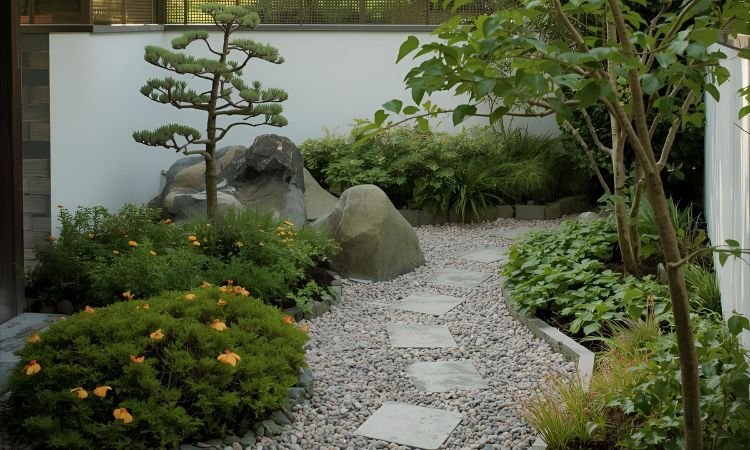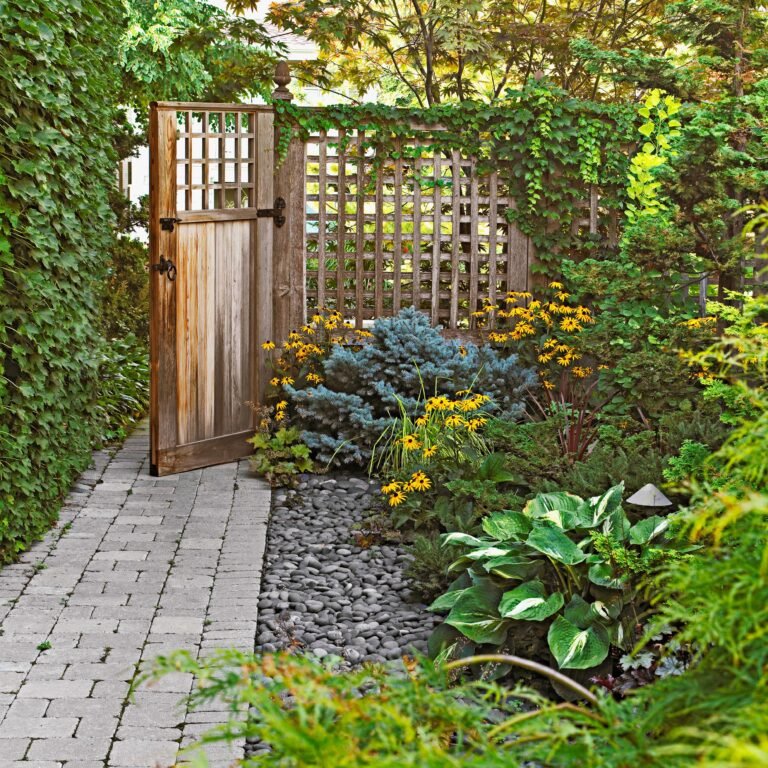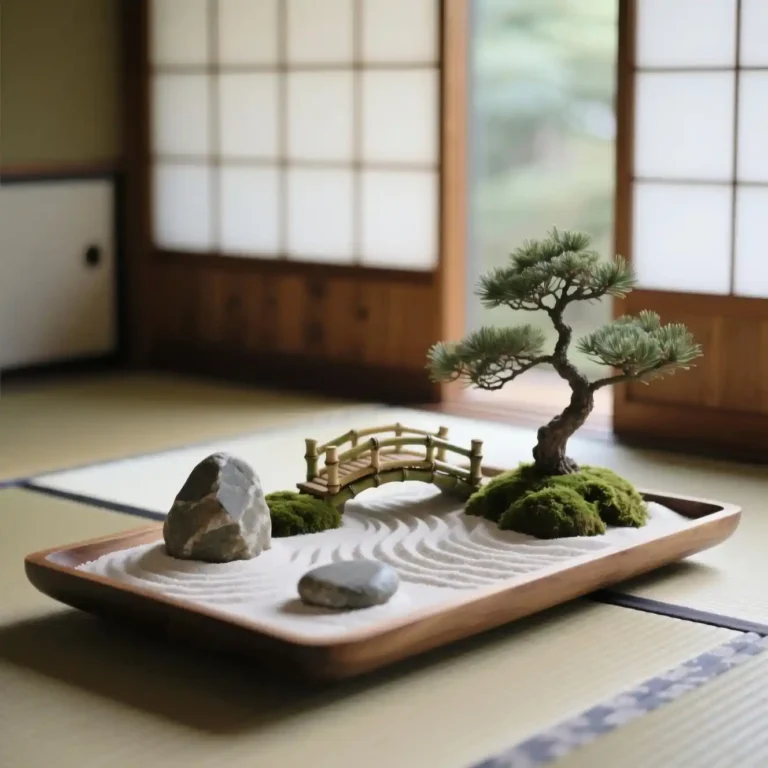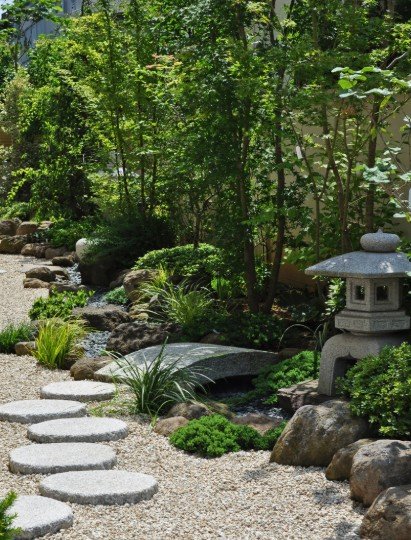Awsome Small Japanese Garden Ideas That Create Peaceful Retreats

Small yards feel limiting. The modest square footage seems inadequate for creating meaningful outdoor spaces that offer beauty, tranquility, or real escape from daily stress. Most people assume gardens require acres they simply don’t have.
Small Japanese garden ideas prove that profound beauty thrives in compact spaces through careful restraint and intentional design. Traditional Japanese principles actually favor intimate scales where every element receives proper attention and contemplation becomes possible.
We’re covering 15 small Japanese garden ideas that work for urban courtyards, side yards, and tiny plots. These approaches create peaceful retreats through strategic plant choices, thoughtful hardscaping, and design principles perfected over centuries in space-limited Japanese cities.
Why Japanese Design Suits Small Spaces
- Minimalism Prevents Visual Clutter: Japanese gardens use fewer carefully chosen elements rather than filling spaces completely. It’s like haiku poetry where economy creates impact. The restraint makes small spaces feel larger through intentional emptiness.
- Vertical Elements Add Dimension: Careful use of height through bamboo, small trees, and layered plantings creates depth despite limited footprints. It’s like building upward where vertical expansion compensates for horizontal constraints. The dimensional approach prevents flat boring gardens.
- Borrowed Scenery Extends Boundaries: Traditional Japanese design incorporates views beyond property lines making gardens feel larger. It’s like visual expansion where distant elements become part of your space. The technique particularly benefits urban gardens surrounded by existing greenery.
- Symbolic Representation Replaces Literal Scale: Japanese gardens use rocks representing mountains, gravel symbolizing water, and miniature elements suggesting larger landscapes. It’s like mental expansion where imagination completes what physical space can’t provide. The symbolic approach creates profound experiences in minimal areas.
15 Small Japanese Garden Ideas
Create tranquil retreats with these small Japanese garden ideas that maximize beauty and serenity in limited spaces.
Miniature Zen Rock Garden
Create desktop-sized zen garden using fine gravel and small stones in a shallow tray. The meditative practice of raking patterns provides daily contemplation ritual. It’s like portable peace where tranquility fits anywhere.
Place on patio table, bench, or outdoor shelf where you’ll see and tend it regularly. Use white sand or light gravel contrasting with darker stones. This small Japanese garden idea brings meditation practice to tiniest spaces.
Bamboo Container Screen
Plant clumping bamboo in large containers creating instant privacy screens. The vertical growth provides maximum screening in minimal footprint. It’s like living walls where bamboo grows upward not outward.
Choose non-invasive clumping varieties like Bambusa multiplex in substantial pots preventing root spread. The contained bamboo provides flexible screening moved seasonally. This small Japanese garden solution delivers height and privacy without consuming ground space.
Stone Basin Water Feature
Install small tsukubai basin with bamboo spout creating traditional water element. The trickling sound adds peaceful ambiance while basin’s compact footprint suits tight spaces. It’s like concentrated tranquility where small water creates big impact.
Position basin near seating area or entry where water sound reaches effectively. Choose basins under 18 inches wide fitting narrow side yards. This small Japanese garden feature adds essential water element affordably.
Moss Ground Cover
Replace grass with moss creating velvety carpet requiring no mowing. The soft green blanket provides distinctly Japanese aesthetic while solving shade challenges. It’s like living velvet where texture transforms ground plane.
Choose moss varieties native to your region ensuring successful establishment. Keep consistently moist during establishment then water during dry spells. This small Japanese garden ground cover thrives where grass struggles.
Dwarf Japanese Maple
Plant compact Japanese maple varieties providing seasonal color and elegant form. The small trees deliver full-sized beauty in miniature proportions. It’s like bonsai at landscape scale where reduced size maintains character.
Choose varieties like ‘Shaina,’ ‘Crimson Queen,’ or ‘Seiryu’ staying under 6-8 feet. Position where morning sun and afternoon shade prevent leaf scorch. This small Japanese garden essential provides year-round interest.
Stepping Stone Path
Create meandering path using irregular flat stones inviting slow contemplative walking. The stepping stones add function while encouraging mindful movement. It’s like choreography where stone placement directs experience.
Space stones at comfortable stride creating rhythm encouraging deliberate pacing. Surround with moss or low groundcover softening edges. This small Japanese garden element guides movement while adding visual interest.
Corner Lantern Focal Point
Position stone lantern in corner creating traditional focal point and subtle lighting. The sculptural element adds authentic Japanese character in minimal space. It’s like jewelry where single statement piece elevates everything.
Choose lanterns scaled appropriately—smaller Oribe or Kasuga styles suit compact gardens. Add LED candle inside creating evening ambiance. This small Japanese garden accent provides cultural authenticity affordably.
Vertical Bamboo Fencing
Install bamboo fencing panels creating instant Japanese aesthetic while providing privacy. The natural material adds warmth and traditional character to any fence line. It’s like wrapping space in natural texture.
Attach bamboo panels to existing fences using zip ties or screws. The material weathers naturally developing silver-gray patina. This small Japanese garden backdrop transforms ordinary fences into design elements.
Miniature Pine or Juniper
Include small pine or juniper pruned in niwaki style showcasing artful branch structure. The sculptural evergreen provides year-round presence and Japanese sophistication. It’s like living sculptures where pruned form becomes art.
Choose slow-growing varieties like mugo pine or dwarf Japanese black pine. Train gradually over years developing characteristic cloud-like foliage pads. This small Japanese garden centerpiece showcases horticultural artistry.
Gravel with Raked Patterns
Use fine gravel as ground cover creating traditional karesansui dry garden. The raked patterns suggest flowing water while requiring zero irrigation. It’s like meditation through maintenance where raking becomes contemplative practice.
Edge gravel areas with bamboo or metal preventing spreading. Rake wave patterns weekly refreshing appearance and providing meditative ritual. This small Japanese garden approach suits dry climates perfectly.
Narrow Side Yard Transformation
Convert awkward side yards into linear Japanese gardens using vertical elements and narrow plantings. The corridor becomes asset rather than waste space. It’s like hallways becoming galleries where passage creates experience.
Plant vertically using bamboo, narrow evergreens, or trained plants maximizing limited width. Add stepping stones and lantern creating journey. This small Japanese garden strategy utilizes challenging spaces beautifully.
Potted Bonsai Display
Showcase bonsai collection on stands or benches creating portable miniature forest. The living art provides maximum Japanese character in minimal space. It’s like museums where curated collections create impact.
Group three to five bonsai at varying heights creating composition. Choose varieties suited to outdoor conditions in your climate. This small Japanese garden approach concentrates beauty through miniaturization.
Low Water Bowl
Float flowers or leaves in low stone bowl creating simple elegant water feature. The still water reflects sky while botanical elements add seasonal beauty. It’s like liquid mirrors where small water creates contemplative moments.
Choose shallow bowls allowing viewing contents from above. Change water weekly maintaining freshness and clarity. This small Japanese garden detail adds water element without plumbing or pumps.
Fern and Stone Combination
Pair shade-loving ferns with moss-covered stones creating woodland-inspired corner. The moisture-loving plants thrive in challenging conditions while delivering authentic Japanese aesthetic. It’s like forest clearings where shade becomes asset.
Choose native fern varieties ensuring success in your region. Position stones suggesting natural outcropping rather than obvious placement. This small Japanese garden grouping celebrates shade through appropriate plant choices.
Compact Zen Meditation Space
Create dedicated meditation corner with small bench or cushion surrounded by simple plantings. The intentional space supports contemplative practice. It’s like personal temples where peace becomes priority.
Keep plantings minimal focusing attention inward rather than outward. Add single focal element—lantern, stone, or small water feature. This small Japanese garden creates functional space supporting mindfulness practice.
Maintaining Small Japanese Gardens
- Embrace Regular Editing: Remove anything not serving clear purpose maintaining essential simplicity. It’s like continuous curation where restraint requires ongoing discipline. The editing prevents spaces becoming cluttered over time.
- Practice Mindful Maintenance: Approach pruning, weeding, and raking as meditation rather than chores. It’s like moving meditation where garden care becomes spiritual practice. The mindful approach transforms maintenance into contemplative time.
- Choose Slow-Growing Plants: Select plants requiring minimal pruning maintaining scale appropriate to small spaces. It’s like strategic selection where right plants reduce maintenance burden. The thoughtful choices prevent constant corrective pruning.
- Accept Natural Weathering: Allow stones, wood, and plants developing patina rather than fighting natural aging. It’s like embracing wabi-sabi where imperfection adds beauty. The acceptance reduces maintenance while adding authentic character.
Frequently Asked Questions About Small Japanese Gardens
What’s the Minimum Space Needed?
Japanese gardens work in spaces as small as 4×6 feet—even balconies accommodate principles through containers and miniature elements. The style actually benefits from intimate scales encouraging close observation and contemplation. Focus on quality over quantity creating meaningful experiences in minimal areas.
Vertical emphasis and symbolic representation allow profound gardens in surprisingly small footprints. The principles scale infinitely from vast estates to tiny urban courtyards.
Do Japanese Gardens Require Expensive Materials?
No—gravel, common stones, bamboo, and native plants create authentic gardens affordably. Expensive imported materials aren’t necessary for capturing Japanese aesthetics. Focus on arrangement and restraint rather than costly elements.
Scavenged stones and DIY bamboo installations reduce costs significantly. The philosophy values authenticity and simplicity over expensive materials or elaborate construction.
Can You Mix Japanese with Other Styles?
Pure Japanese gardens follow specific principles, but borrowing elements works when done thoughtfully. Select Japanese features resonating personally rather than forcing complete aesthetic overhaul. The borrowing approach allows incorporating beloved principles without total transformation.
Focus on core concepts—simplicity, restraint, natural materials—rather than literal replication. The philosophical adoption matters more than perfect stylistic accuracy for most Western gardens.
How Much Maintenance Do They Need?
Well-designed Japanese gardens need regular but manageable maintenance—weekly for raking gravel, monthly for pruning, seasonal for major tasks. The work becomes meditative practice when approached properly rather than burdensome chore.
Initial establishment requires more effort while plants settle and you learn proper techniques. Once mature, maintenance involves thoughtful attention rather than intensive labor.
What Plants Work in Shade?
Ferns, hostas, Japanese forest grass, moss, and shade-tolerant azaleas provide Japanese character in low light. Many traditional Japanese plants evolved in forest understories tolerating limited sun. Choose varieties suited to your specific shade levels.
Japanese gardens actually celebrate shade through appropriate plant selection rather than fighting natural conditions. The acceptance of existing light creates more successful gardens than forcing sun-loving plants into inappropriate locations.
Creating Your Peaceful Corner
Small Japanese garden ideas prove that profound tranquility doesn’t require vast spaces. These intimate gardens deliver peace, beauty, and contemplation through careful restraint and intentional design refined over centuries. The compact scale actually enhances rather than limits the meditative experience these gardens provide.
Start by observing your space honestly assessing light, drainage, and existing conditions. Choose elements serving specific purposes rather than filling space randomly. The patient thoughtful approach creates gardens that feel spacious despite modest dimensions through strategic design and philosophical foundation.
What small space would you transform into Japanese retreat? Share your compact garden plan






